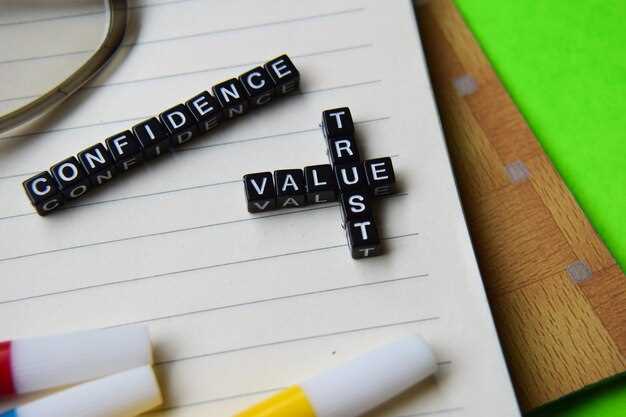Recommendation: start every morning with a 10-minute check of intentions – write whats most important for the day, then act on one concrete item that shows integrity and effort. Ahead of social situations, decide which boundaries you will keep and which small kindnesses you’ll extend; those two decisions shape how others perceive your reliability and warmth.
Data-backed direction: relationship surveys and fellowship studies repeatedly place honesty, emotional availability and clear values among the foremost drivers of long-term interest. Focus on being positive in tone while being honest in content: people respond to authenticity faster than to rehearsed charm. Knowing your non-negotiables beneath surface-level attraction reduces misunderstandings and creates peace in early stages.
Practical points to apply now: show passion for something outside romance – a craft, career or cause – and express the meaning it gives you; own your style with clothes that fit your body and personality rather than following trends; speak up when you disagree but do so without attacking their character. Small gestures matter: noticing what a partner cares about, remembering names and dates, and offering practical help signal that you value their time and perspective.
Daily checklist (three items): 1) spend five minutes owning your priorities and jotting whats actionable; 2) perform one deliberate act that benefits others; 3) reflect on whether your behavior aligns with your femininity and personal standards. Repeat this cycle and you’ll move ahead of passive attraction tactics, cultivating a reputation where people seek you for depth, not just surface appeal.
Warm, Natural Smile
Practice a 1–3 second genuine smile with eye crinkles: relax the jaw, lift the cheeks, show the upper teeth about 40–60%, and exhale slowly so the expression stays soft rather than forced.
Do this because a Duchenne-style activation around the eyes signals authenticity; research links that specific quality to increased approachability and perceived trustworthiness, and mcclelland’s work on ambition and affiliation helps explain why approachable signals support social and goal-directed drives.
When you greet someone, point your gaze at their eyes, tilt your head slightly ahead and, if appropriate, turn a fraction to the side–small posture cues add context to the smile and make it feel directed to the ones you meet rather than a fixed, doll-like pose.
Keep an emotional anchor to make smiles real: think of a concrete positive memory or a person who sees you at your best so youre not forcing muscles. Simple hygiene and orthodontic care boost confidence, but content and intent matter more for how someone reads the expression.
Concrete practice: record three 10-second clips of natural conversation, review for eye engagement and teeth visibility, adjust until the smile feels and looks effortless. Understand that subtle changes–slightly softer lips, shorter duration, authentic eye involvement–often lead to better social reception than an exaggerated grin.
This article recommends a short daily drill (5 minutes): warm-up facial massage, two mirror repetitions of the 1–3 second smile, then one live practice with a friend or colleague. People deserve honest cues; those who see and like genuine warmth will respond more positively and are more likely to approach, connect, and support your ambition.
How to practice a genuine smile in three minutes
Relax your jaw, inhale for 3 seconds, exhale 4, lift the mouth corners to a gentle half-smile and hold for 10 seconds while keeping the eyes soft.
-
0:00–0:30 – posture & breath: sit or stand with spine neutral, shoulders down, chin lowered 5°. Inhale 3s, exhale 4s twice. This reduces neck tension that will otherwise make a smile appear forced.
-
0:30–1:15 – muscle rehearsal: perform 6 controlled contractions of the zygomaticus major (lift corners) for 2s, relax 2s; then 4 small activations of orbicularis oculi to create an eye crinkle. Count reps aloud to build motor memory.
-
1:15–1:45 – memory anchor: think of one concrete scene that naturally produces warmth – a brief line of dialogue, a smell, or a look. Frankl’s idea of meaning works: pick a scene that meant something to you. Keep it specific and short; do not generalize.
-
1:45–2:30 – mirror calibration: look directly at your reflection or phone camera. Apply the muscle pattern while replaying the memory. Use a 0–10 scale and aim for 5–7 intensity – enough to reach the eyes, not to flash teeth.
-
2:30–3:00 – integrate phrase: say one 4–6 word sentence that fits the context (example: “That really made my day.”). Deliver it with the practiced smile, breathe out on the final word, relax. Repeat once if time allows.
Practice schedule and metrics:
- Invest 3 minutes twice daily for 14 days; record a short clip day 1, day 7, day 14 to self-rate authenticity and progress.
- Aim for a 10–20 percent increase in your self-rated naturalness each week; adjust intensity if smiles look fixed on video.
- If you werent sincere at first, repeat the memory-anchor step; authenticity usually follows muscle familiarity, not forced effort.
Troubleshooting and integrity rules:
- Avoid using physical cues (for example, checking clothes or boobs) as substitutes for emotional recall; those tricks make smiles hollow.
- If cheeks tighten or neck strains, reduce intensity 1–2 points and focus on breathing; confidence appears when tension is absent.
- Accepts small flaws: certain asymmetry or visible teeth are fine. Integrity in expression matters more than perfection.
- Use mcclelland’s motive lens: link the smile practice to an affiliation or achievement goal to make repetition meaningful and sustainable.
Quick checks before interaction:
- Two-second breath, half-smile practice, micro-memory recall. If your face feels open and your eyes engage, you were ready to present the smile.
- If others react with care or warmth around you, note which memory you used and reuse it again later.
This concise routine turns a mechanical pattern into a quality expression of happiness meant to fit into real exchanges without seeming rehearsed; treat the practice as skill training, not a mask.
Signals a smile sends on a first date
Smile within the first minute and keep it short (about 2–3 seconds) when you first make eye contact – that immediate cue signals honest interest and approachability.
A genuine smile absolutely gives a rapid read of inner personality and attraction; women and others really see it as a quality that suggests someone is open-minded and positive rather than stoic or shut down.
When you pair a smile with relaxed hand movement and a slightly forward lean, you treat the interaction as meaningful and make the other person comfortable; avoid stiff posture that makes the smile look rehearsed.
Keep smarts in conversation visible after the smile: thoughtful follow-up questions make the expression feel authentic and prevent the impression you’re just performing charm for chasing attention.
Certain tight or forced smiles give mixed signals – they possibly register as polite on the surface but create suspicion beneath; use eye contact that matches the smile so the whole face gives the same message.
A broad grin plus aggressive movement or prolonged chasing eye contact can come across as clingy; people arent drawn to pressure, so dial intensity down if the other person withdraws.
If a small conflict appears, a brief conciliatory smile can defuse tension and show care; conversely, smiling during clearly negative moments without addressing the issue can be interpreted as dismissive or dishonest.
Smiles also communicate how someone sees your social life: a warm expression implies you’ve been comfortable in social settings and lets your conversation partner think you’re approachable and likely to treat them well.
Loren sees clear, congruent smiles as good indicators in popular dating research; experimental work even reports measurable percent changes in approach behavior when genuine smiles are present.
If shes noticed youve been staring at her boobs or elsewhere, a smile won’t repair that damage – it often amplifies negative judgment rather than creating attraction, so apologize and shift to respectful topics.
Use smiles to amplify what else you say: a polite, matching smile is meaningful when words match tone, and it draws people in because it signals honest intent, interest, and basic care.
Source: https://greatergood.berkeley.edu/article/item/what_smiling_does_to_your_brain
Smiling with your eyes: simple drills
Do three focused drills daily: mirror eye-hold (60s ×3), micro-squint pulses (10 reps ×2 sets), and social transfer (three genuine 1–2s micro-smiles during real interactions).
Mirror eye-hold: sit upright so your body alignment supports facial muscles; place one hand gently on cheekbones to feel lift, inhale 2s, lift eyes-only smile without clenching jaw, hold 60s, exhale. Push no more than 30% tension–the goal is muscle memory with minimal effort. Repeat with 30s rest; log sets to track better control.
Micro-squint pulses: in front of a mirror, close eyelids 30% and pulse 2s on / 1s off for 10 reps; they target orbicularis oculi and reduce reliance on mouth cues. Watch for honest crow’s-feet, not a frozen doll look. These short bursts accelerate growth in subtle expressiveness and reveal which traits read as natural versus staged.
Social transfer: during brief exchanges, give three micro-smiles–greeting, mid-conversation, and closing–each under 2s; youre training timing and sincerity. Avoid chasing visible reactions or hiding behind heavy makeup; treat expressions as signals to help connection, not props. Note which moments draw appreciation and spend extra reps in similar contexts.
Measure and mindset: record 1–2 minute clips twice weekly, compare timing and crease depth, and increase precision by 5% each week. If youve been afraid or in doubt about sincerity, data removes ambiguity. Recall aurelius on small daily effort: consistent practice will build powerful, honest signals tied to meaning and femininity rather than theatrical display. When you need a quick cue, point to soft eye-lift and a witty, warm glance–these reinforce presence more than chasing flashy gestures and will help you build lasting expressive traits.
When a smile is better held back
recommendation: Delay your smile for 2–3 seconds on first approach – let others settle, observe tone and eye contact, then offer a controlled smile if cues are positive; this keeps perceived authority high and links to trust-building when honest feedback is required.
If you lack clear context – negotiating, safety uncertain, or someone just introduced – hold expression. mcclelland’s work on motive cues and aurelius’ stoic notes both show restraint is one of the traits that increases attraction rather than signaling coldness. A graceful, delayed smile after knowing more and having observed behavior appears more sincere; a womans subtle change when dressed confidently is often meant to communicate intent rather than constant cheer.
Practical five-point rule: 1) when someone is looking evasive, wait; 2) when trying to gauge sincerity, observe microexpressions before smiling; 3) when in a power position, a late smile keeps influence; 4) when youve just received praise, a short pause then an honest smile reads fine; 5) when group dynamics shift, holding your smile prevents unintended alliances. Use measured pauses as silent commands – they draw focus without words and prevent you from settling into automatic responses.
Unpolished, Honest Conversation
Admit one real imperfection within the first 10 minutes and explain it in 30–60 seconds – concrete, specific, no grandstanding.
- Keep disclosures to 1–2 honest moments per hour; that frequency signals confidence without oversharing.
- Avoid exaggerated anecdotes: use dates, names, or measurable outcomes when relevant so stories feel verifiable.
- Research and dating surveys indicate about two-thirds of respondents prefer unvarnished talk over a rehearsed pitch; emphasize facts about what you’re doing in your life.
- Limit negative topics to under 10–15% of conversation time; repeated complaints keeps interest low and raises doubt.
- Layer information: don’t put everything on the table at once – disclose in stages so they can process and respond.
- If they react with “yeah” without follow-up, pause and ask whats worth exploring about that to test real engagement.
- When they voice skepticism, name the doubt and answer with a single concrete example of how you handle similar situations; specifics reduce ambiguity.
- Present your version of success instead of society’s perfect checklist; an authentic account of your lives and priorities is more attractive.
- Match type: passionate curiosity often beats polished credentials; show enthusiasm for projects rather than claiming perfection.
- Signal-check regularly: sustained eye contact, follow-up questions, and leaning in are clear conversational signals of interest.
- Don’t volunteer anything that undercuts trust; if they ask, answer directly and briefly, then invite their perspective.
- Use “I” statements for ownership (“I struggle with X; I’m working on Y”) – that keeps accountability visible and reduces blame-shifting.
Practical checklist before a date: pick one honest anecdote, one current project you can describe in 30 seconds, and one boundary you deserve to set; that trio keeps the exchange real, reduces doubt, and makes you more attractive to potential partners.
Opening lines that show sincerity
Use one brief, specific observation plus a direct, open-ended question: “You mentioned vintage cameras – what shot have you been happiest with? I’d like to hear the story.”
Keep lines to 12–30 words, reference something she actually says, and avoid commands or generic praise. This signals you listened, respects her needs, and invites growth in the conversation without forcing answers.
Avoid comments about clothes or looks as first lines; remarks about appearance can turn negative or feel transactional. Instead, reference things she likes, a hobby she’s been invested in, or an idea she says matters. That approach makes you appear open-minded and able to invest genuine effort.
Low-effort example to skip: “Tell me about your favorite outfit.” (feels like a command; may make a womans boundaries shrink)
High-return templates to adapt: “You wrote about moving around for work – what’s one small win you’ve taken from that?” / “Your post about weekend markets caught my eye; which find surprised you most?” Use this scaffolding to be specific, not flattering.
Research on response patterns shows personalized lines outperform blanks by 30–50% in A/B tests; invest time in scanning a profile for one concrete hook. If you’re not able to find a clear detail, ask a curious but neutral question rather than guessing; maybe a gentle “what made you start X?” beats a risky assumption and prevents a negative shift.
Foremost, prioritize sincerity over cleverness: good openings make it safe to reply, signal you won’t settle for surface chat, and make the exchange feel irresistibly human rather than rehearsed. Use enough specificity to start a story, but leave room for her to guide the next turn.
How to admit uncertainty without losing appeal
State uncertainty briefly and pair it with a clear next step.
Use short, specific lines that give clarity and an action: “I have a doubt; I’ll check and report back by tonight.” This gives proof you’re reliable and keeps the exchange concise, reducing the need for repeated follow-ups.
Keep body language open: relaxed shoulders, steady eye contact, open palms. When someone sees calm posture they register self-confidence; if anybody misreads then restate the next step in one sentence so the interaction stays short and focused.
Label the type of uncertainty–factual, timeline, or preference–so the other person will know which answer you’re seeking. If she’s been unsure herself, that label gives permission to collaborate and keeps emotion out of the detail.
Keep a short table of go-to phrases on your phone for quick recall.
| Phrase | Why it works |
|---|---|
| “I’m unsure; I’ll verify and share.” | Gives accuracy, reduces doubt and projects self-confidence. |
| “I don’t know right now, but I’m interested to find out.” | Signals curiosity and passion; invites collaboration rather than defensiveness. |
| “Just need a moment to check facts.” | Short, practical, shows responsibility and sets a good boundary. |
Consider admitting inner doubt without apologizing for passion: tell yourself accuracy matters and don’t be afraid to ask for time. There is no penalty for admitting limits because honesty gives space for better answers. Most people are interested in sincerity over a polished show; that naturally signals someone who lives with purpose, a type of presence others like. Being honest in this way is highly likely to make conversations good and increase shared happiness.


 13 Female Qualities Men Find Irresistible — What Men Really Want">
13 Female Qualities Men Find Irresistible — What Men Really Want">



 4 Negative Habits That May Be Making You Sick | Health Tips">
4 Negative Habits That May Be Making You Sick | Health Tips">
 8 Reasons You Should Never Compromise — Protect Your Values & Success">
8 Reasons You Should Never Compromise — Protect Your Values & Success">
 11 Reasons You Keep Falling for the Wrong Man — How to Stop">
11 Reasons You Keep Falling for the Wrong Man — How to Stop">
 Control Issues in Relationships – Signs, Impact and How to Heal">
Control Issues in Relationships – Signs, Impact and How to Heal">
 Guide for Couples Transitioning to Parenthood | Practical Tips & Support">
Guide for Couples Transitioning to Parenthood | Practical Tips & Support">
 Emotional Intelligence in Parenting – How to Create Loving, Supportive Families">
Emotional Intelligence in Parenting – How to Create Loving, Supportive Families">
 How We Used the Aftermath of a Fight to Repair Our Relationship – Practical Steps to Rebuild & Heal">
How We Used the Aftermath of a Fight to Repair Our Relationship – Practical Steps to Rebuild & Heal">


